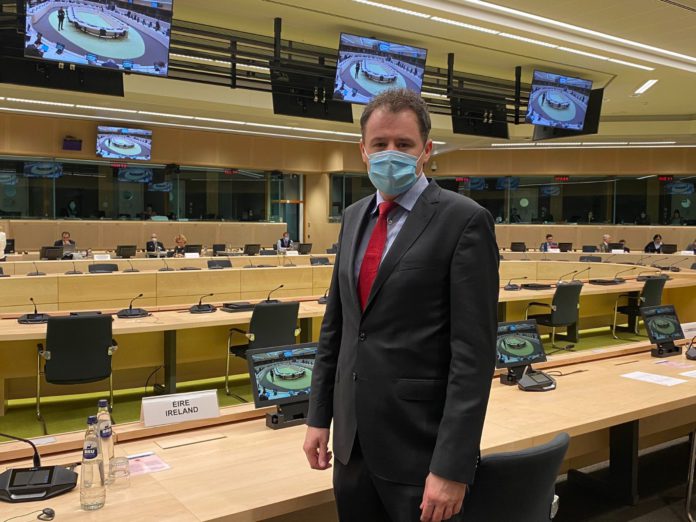Sinn Féin’s Matt Carthy has questioned Minister Charlie McConalogue’s plans to encourage the earlier finishing of beef cattle.
As That’s Farming reported last November, the measure is contained in the government’s Climate Action Plan, which aims to achieve a 51% reduction in overall greenhouse gas emissions by 2030.
When launching the report, the government said the plan will:
- Put Ireland on a more sustainable path;
- Cut emissions;
- Create a cleaner, greener economy and society;
- Protect Ireland from the “devastating” consequences of climate change.
Earlier finishing cattle
Regarding the early finishing age of cattle, the plan sets out a target to reduce the average age of slaughter of prime animals from 27 to 24 months by 2030.
In response to the deputy’s question during a Dáil debate on Tuesday, February 1st, 2022, McConalogue referred to the aforementioned Climate Action Plan.
He said that as it outlines, “the main way I can reduce methane emissions from a pasture-based beef production system in the medium term is to transition the beef system to a system of earlier finishing of animals”.
“Currently, prime beef cattle are slaughtered at an average of 27 months. This can be reduced to an average of 24 months over the course of the decade.”
He said this would require support for breeding improvements but also a “critical” engagement by the beef processing sector to “encourage and support” farmers to finish their animals earlier.
Suckler supports
Furthermore, he confirmed that his department would continue to engage with stakeholders on what he regards as an “important” matter.
In addition, he confirmed that officials are currently working with the EPA to ensure that any progress is correctly accounted for in the GHG inventory.
“It is intended to continue with a breeding programme in the next CAP which will build on the gains of both the BDGP and the BEEP schemes and help realise the additional gains Teagasc and ICBF have identified.”
He said the proposed Suckler Carbon Efficiency Scheme would build on “significant investments” made to date under the BDGP.
Concluding, he said: “Breeding programmes like the BDGP and the proposed SCEP will continue to play a crucial role in supporting breeding decisions which can help farmers to produce an animal of the required weight at a younger age so that the improvements are fully reflected in the inventory.”
Other articles:





